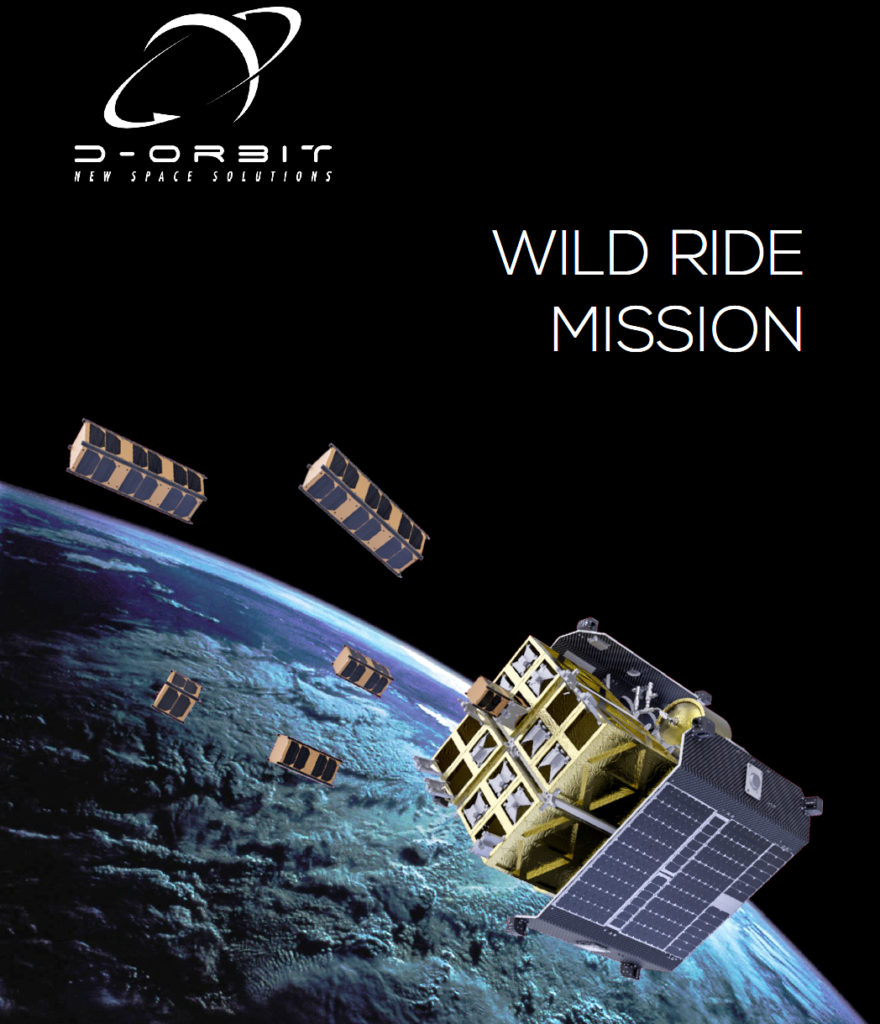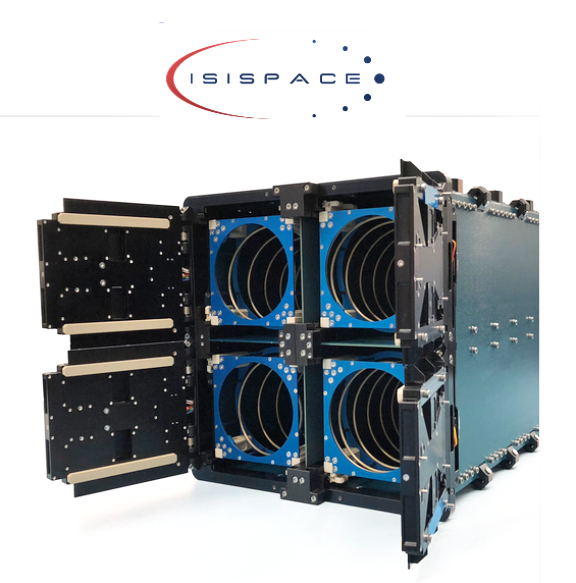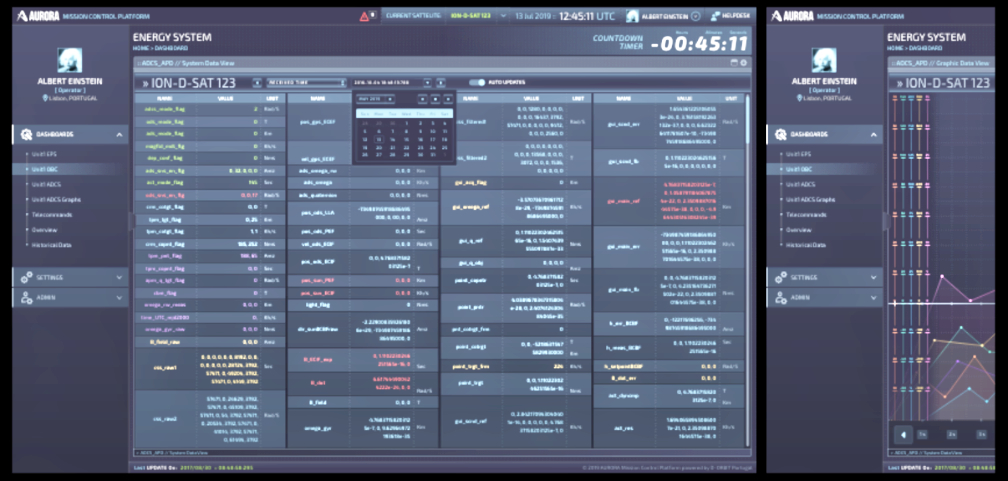
D-Orbit has announced the upcoming launch of WILD RIDE, the third mission of the company’s proprietary space transportation vehicle ION Satellite Carrier.
Scheduled to lift-off in June of 2021, the vehicle, called ION SCV Dauntless David, will deploy six satellites into distinct orbits and perform the on-orbit demonstration of three payloads. This mission, which serves clients from 12 different nationalities, will increase the total number of payloads launched by D-Orbit to 54.
The mission manifest includes international clients, such as the Spanish Elecnor Deimos, the Bulgarian EnduroSat, and the Kuwaiti Orbital Space, which will launch the country’s first radio amateur satellite. Also on board, under contract with ISILAUNCH and integrated into a QuadPack from Dutch satellite manufacturer ISISPACE, are Finnish Reaktor Space, Marshall Intech Technology from UAE, and the Royal Thai Air Force.

Image is courtesy of the company.
The mission, which will start on a 500 km Sun Synchronous Orbit (SSO), will go through four phases: satellite deployment, on-orbit demonstration of the payloads hosted onboard, testing of D-Orbit’s advanced services, and decommissioning.
During the deployment phase, ION will deploy each satellite into a distinct orbit. The release of the seven satellites onboard will follow a highly customized plan that defines the moment of release, and the direction and speed of ejection of each spacecraft.
During the on-orbit demonstration phase, ION will operate LaserCube, a payload hosted onboard through an innovative plug-and-play system that streamlines the integration of instruments and experiments developed independently by third parties. LaserCube, from the Italian Stellar Project, is an optical communication device featuring a throughput performance more than 10 times higher than traditional radio devices. The increased throughput, combined with lower latency and increased security, enables new business opportunities in fields requiring increasingly higher data volumes like Earth imagery, weather forecasting, global telecommunications, and internet services.
The third phase will be focused on testing Nebula, a payload at the core of D-Orbit’s upcoming advanced services. The first iteration of Nebula, an on-demand, on-orbit cloud computing and data storage service being developed by D-Orbit UK, features Unibap’s SpaceCloud iX5-100 radiation tolerant computing module. A range of innovative applications will be demonstrated using sophisticated, artificial intelligence/machine learning (AI/ML) techniques; some of these experiments will feature video compressing techniques from industry specialist V-Nova.
Another Machine Learning (ML) payload, called Worldfloods, has the ability to identify flooding and send down a flood map to emergency responders seconds after image acquisition. Developed by the Frontier Development Lab (FDL), a partnership led by Trillium Technologies with the University of Oxford and ESA, Worldfloods offers a glimpse of a future where rapid insight is delivered almost instantaneously from space.
During the fourth and final phase, decommissioning, D-Orbit’s operations team will deploy ADEO. Developed by the German HPS, ADEO is a small, 1U-size, de-orbit sail subsystem that will be deployed to 3.6 m2 at the end of the mission to accelerate the decommissioning phase by passive means, using the air drag of the upper atmosphere. This will lead leading to a faster, residue-free incineration of ION.
The entire mission, including operations on payloads, will be managed by D-Orbit’s mission controllers through AURORA, the company’s proprietary cloud-based mission control software suite that enables satellite operators to manage and control multiple payloads simultaneously, from any location in the world, saving all the expenses connected with software design, development, testing, deployment, and maintenance.

The mission will also feature a SETI (Search for Extraterrestrial Intelligence) experiment in collaboration with media artist Daniela de Paulis and INAF (Istituto Nazionale di Astrofisica). The experiment, which investigates the possibility to communicate with other kinds of life in the universe, consists in the transmission of simulated alien messages to be received and decoded by radio telescopes worldwide.
“In addition to the many technical advances, this mission marks a major milestone for us: an international collaboration involving companies and institutional organizations from 11 nations, the largest we have had so far,” said Luca Rossettini, CEO of D-Orbit. “This is a testament to how borderless the space ecosystem truly is. Its rapid expansion, and the global services it is creating, will substantially improve life on Earth and mark this new decade in ways that we can’t even imagine right now.”
“We are very excited about this mission; the great variety of payloads onboard, the purpose of their single missions, so many of which targeting sustainable purposes, innovative challenges, and great technological advancements, make this mission quite unique,” commented Renato Panesi, the company’s CCO. “While the best part has yet to come, this has already been an extremely rewarding experience.”
While getting ready to launch this mission, the D-Orbit team is already working on future missions, with the next launch planned for Q4 2021.
